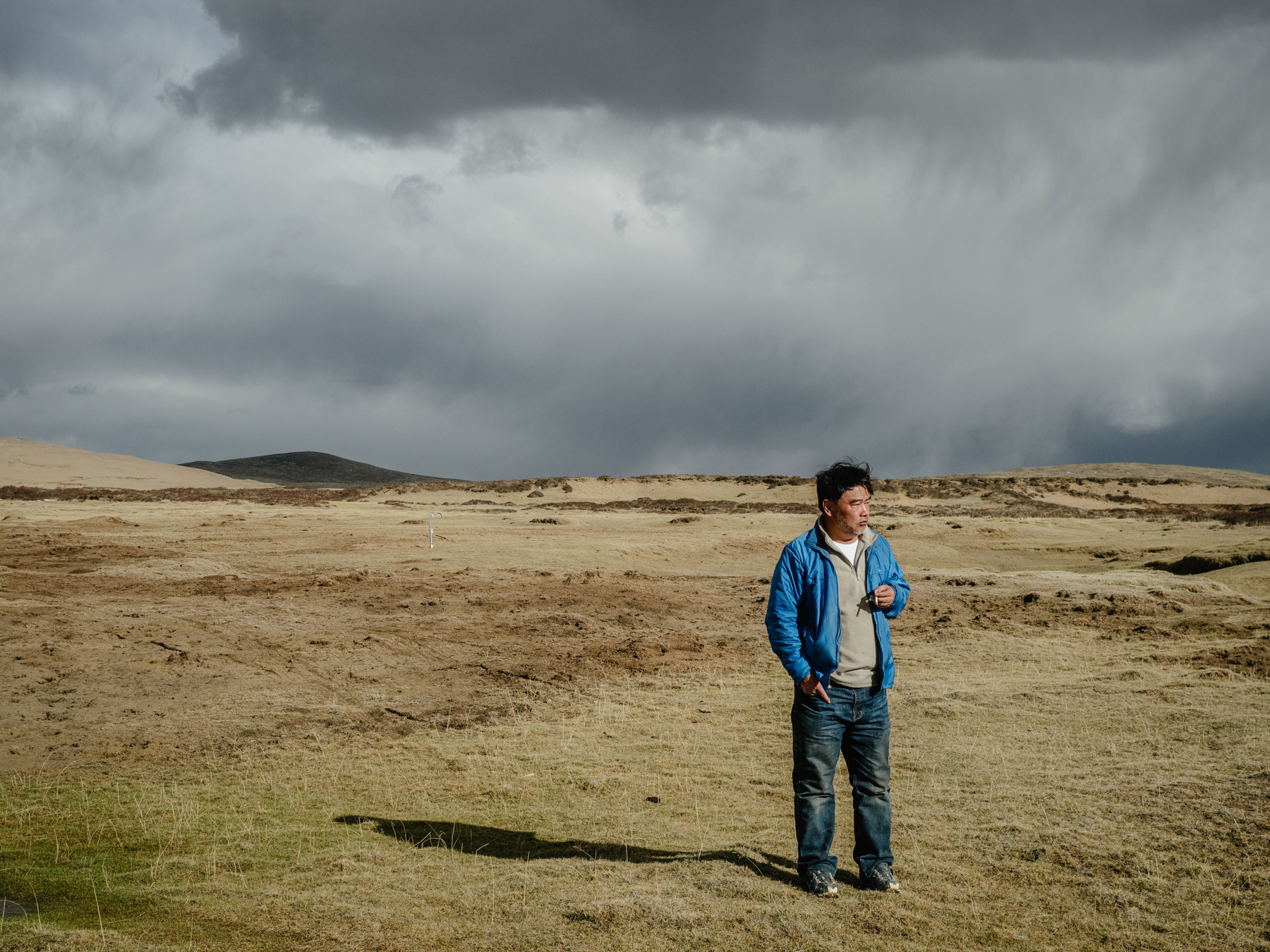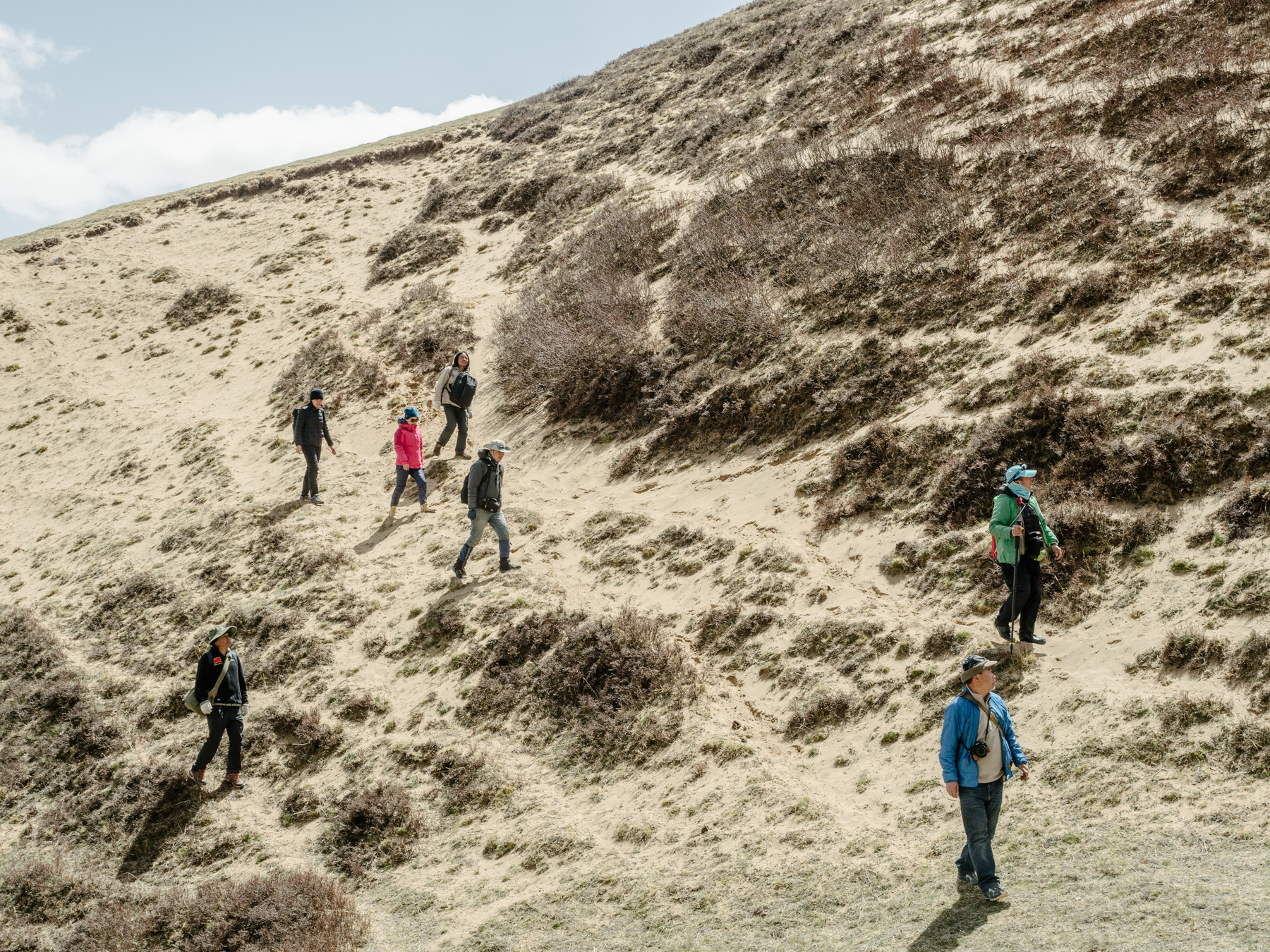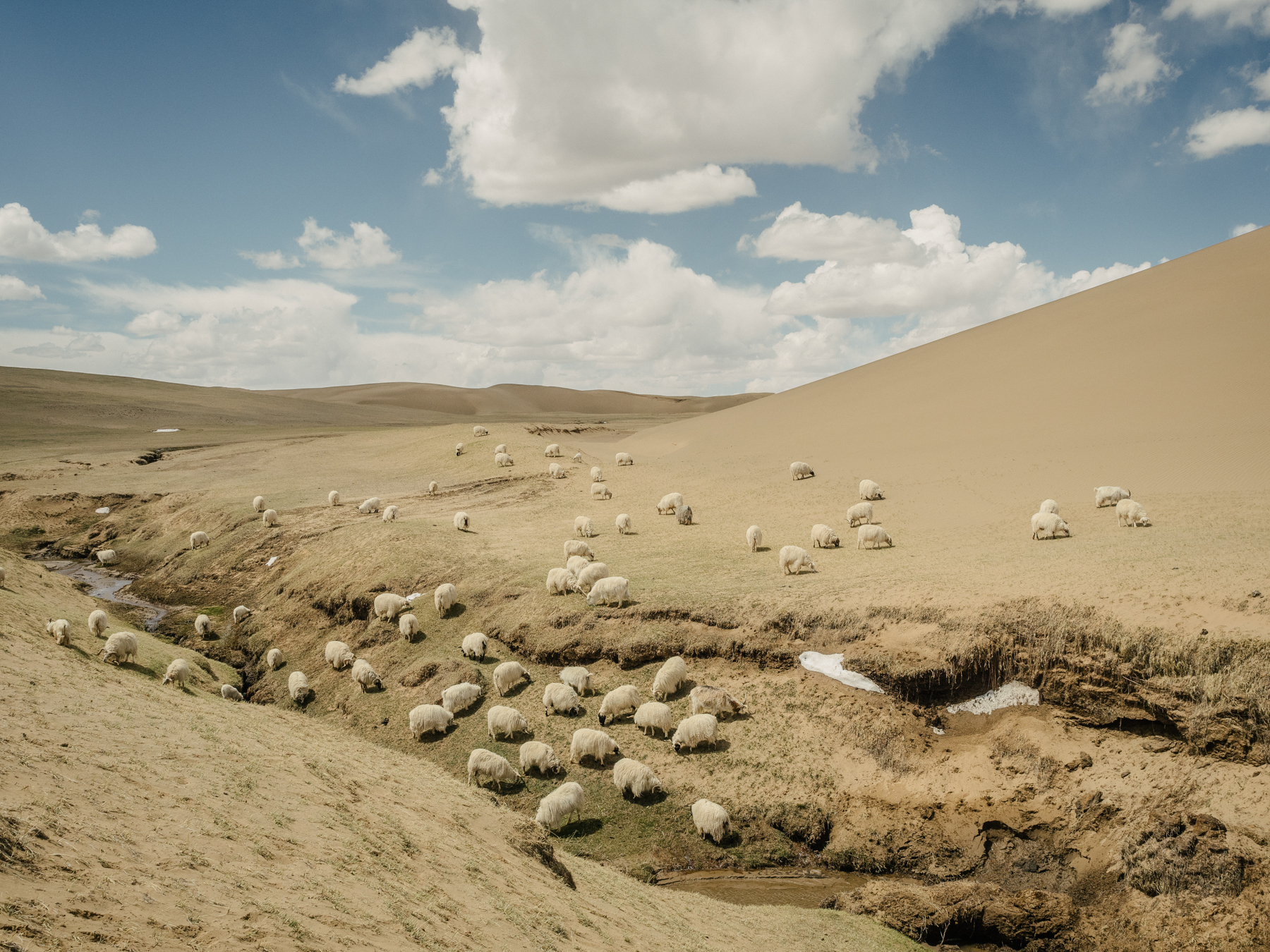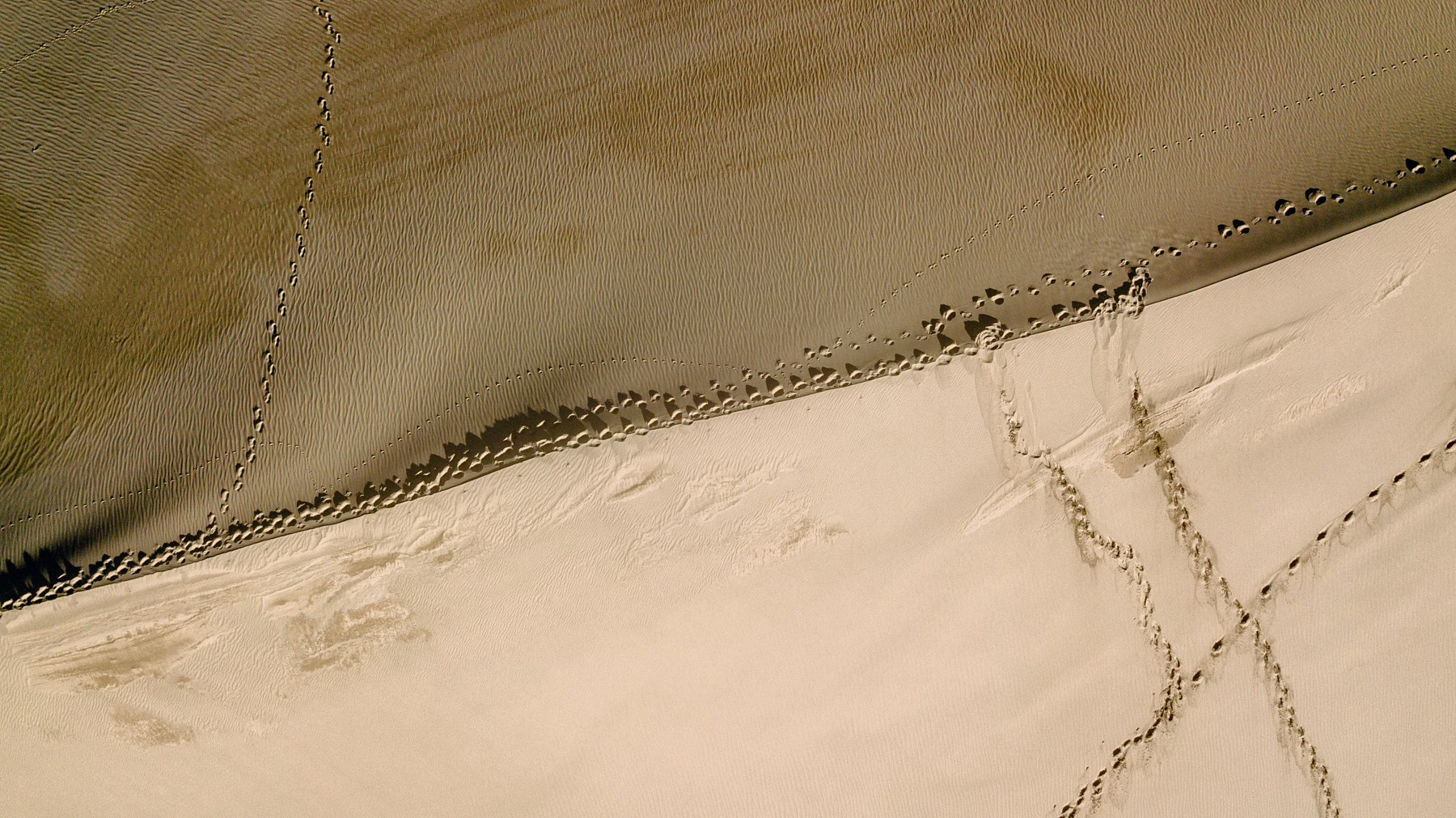
Geologist and environmentalist Yang Yong takes a cigarette break after a long drive. He says, “I’m not doing this for money or fame, I just want to know more. We know so little, and we are now at the point where everyone is concerned about this region and its relationship to climate change. The main discussion is regarding how we can protect, develop, and use it. It’s a massive area, and I can hardly explore every corner of the plateau. And time is running out [for me].”
Yang drives past grazing yaks in the Sanjiangyuan National Nature Reserve in Qinghai province. In an effort to address a record dry spell in the Yellow River in the 1990s, as well as other environmental issues, the government established the Sanjiangyuan Reserve to protect the river’s source in northwest Qinghai province.
Rain clouds approach Madoi county while Yang’s expedition group eats lunch after stopping to stock up on fuel and food supplies, Golog Tibetan Autonomous Prefecture, Qinghai province. Madoi county has an elevation of around 14,000 feet. Madoi’s annual temperature averages 25 degrees Fahrenheit, and it has very low annual precipitation, averaging less than 13 inches.

Yang leads his team along the edges of a desert in Madoi county.

Rain clouds at an altitude above 13,000 feet, in Madoi county.

Sheep at the edge of a receding grassland. Experts are divided over whether overgrazing in this fragile region is one of the major causes of desertification.

Trails of footsteps on a sand dune mark where Yang and his team walked. In a 2015 study, the Chinese Academy of Science reported that deserts have expanded on land surrounding the headwaters of the Yellow River to 1,060 square miles in the last 30 years.
No comments:
Post a Comment